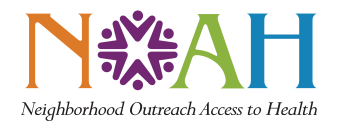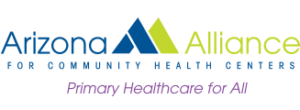Breast Cancer Screenings and What You Need to Know
At NOAH, your health is our top priority, and navigating breast cancer screenings can feel overwhelming. If you’re uncertain about when to start, how often to screen, or the process of scheduling a mammogram, our team is here to help.
Who Should Get Screened?
Breast cancer screening is recommended for all women who do not have symptoms and have never had breast cancer. Screening is most beneficial for women at average risk of developing breast cancer.
What Does Breast Cancer Screening Look Like?
Breast cancer screening involves mammography, a low-dose X-ray that helps detect early signs of breast cancer, even before symptoms appear. During a mammogram, your breasts are compressed between two firm surfaces to spread out the breast tissue, allowing for a clearer image. The test is generally painless and only takes a few moments, with some mild discomfort from the pressure or squeezing sensation.
After images are made of both breasts, you may be asked to wait while your care team checks the quality of the images. The entire process usually takes less than 30 minutes.
Mammograms are one of the most effective tools for early detection. While a positive result doesn’t confirm cancer, further testing will help determine next steps.
Where Can You Get Screened?
Due to the specialized equipment required, mammograms are usually taken at a medical imaging facility and often require a referral from your primary care provider. At NOAH, our providers are dedicated to making sure you get the care you need stress-free:
- Schedule a well-woman exam with your NOAH health provider.
- During your visit, request an order or referral for a mammogram. Depending on your insurance, your provider will refer you to either Southwest Medical Imaging (SMIL) or SimonMed Imaging.
- Once you have the referral, schedule your mammogram appointment.
- If you are underinsured or uninsured and need to visit SMIL, you can inquire about financial assistance by calling 480-657-2500 (Option 5).
- Have questions about getting a mammogram or need help finding a location? Call NOAH’s Community Health Worker at 480-546-8115.
When Should You Get Screened?
NOAH recommends women at average risk for breast cancer get screened every other year starting at age 50. However, every situation is unique and recommendations may vary based on health history and risk. It’s not uncommon for women to get routine mammograms in their 40s or even 30s. Ultimately the decision on when and how often to screen should be a joint decision between you and your provider.
Why Is Screening Important?
Breast cancer is the second leading cause of cancer-related deaths among women in the U.S. Early detection through screening significantly increases the chances of effective treatment and survival. Simply put, early detection can save your life.
For any questions or concerns, reach out to schedule an appointment with one of our providers today.

